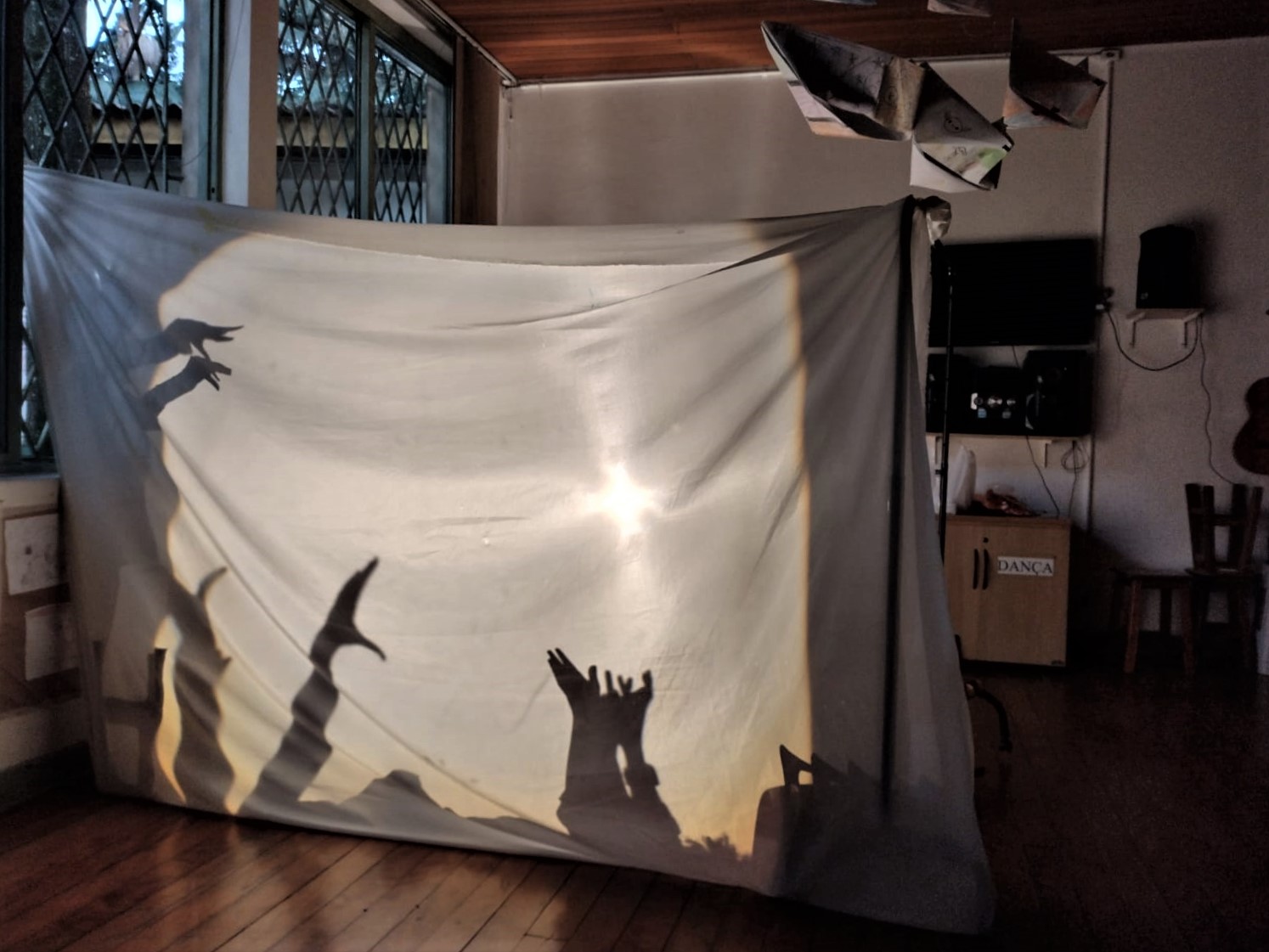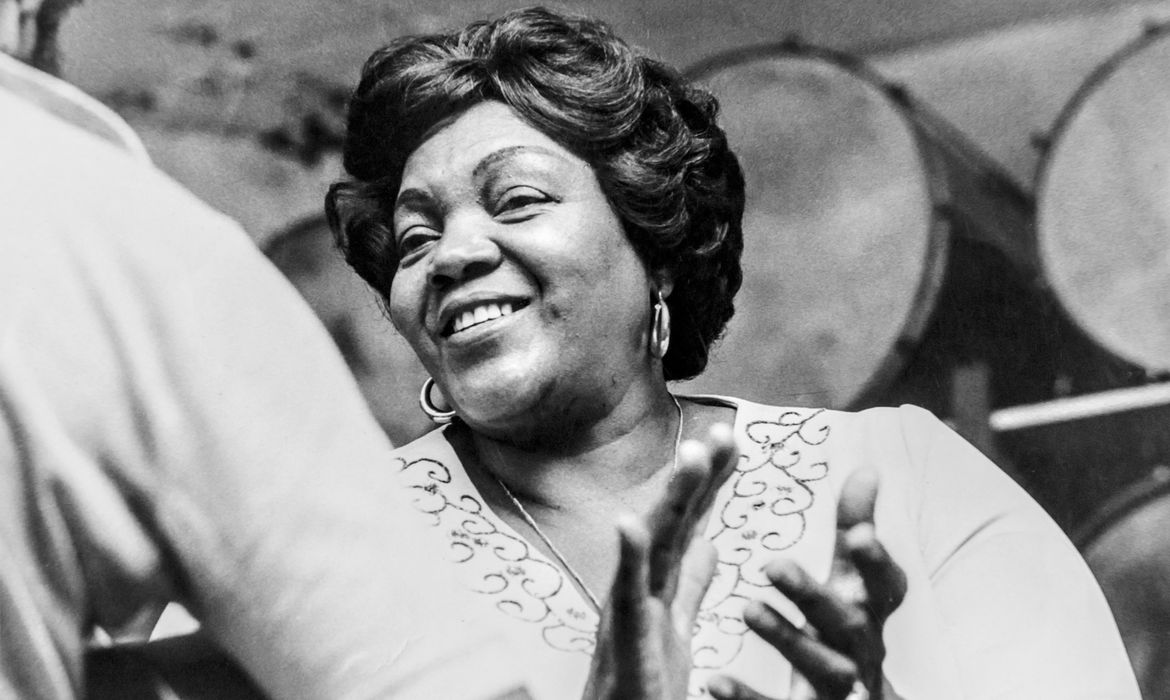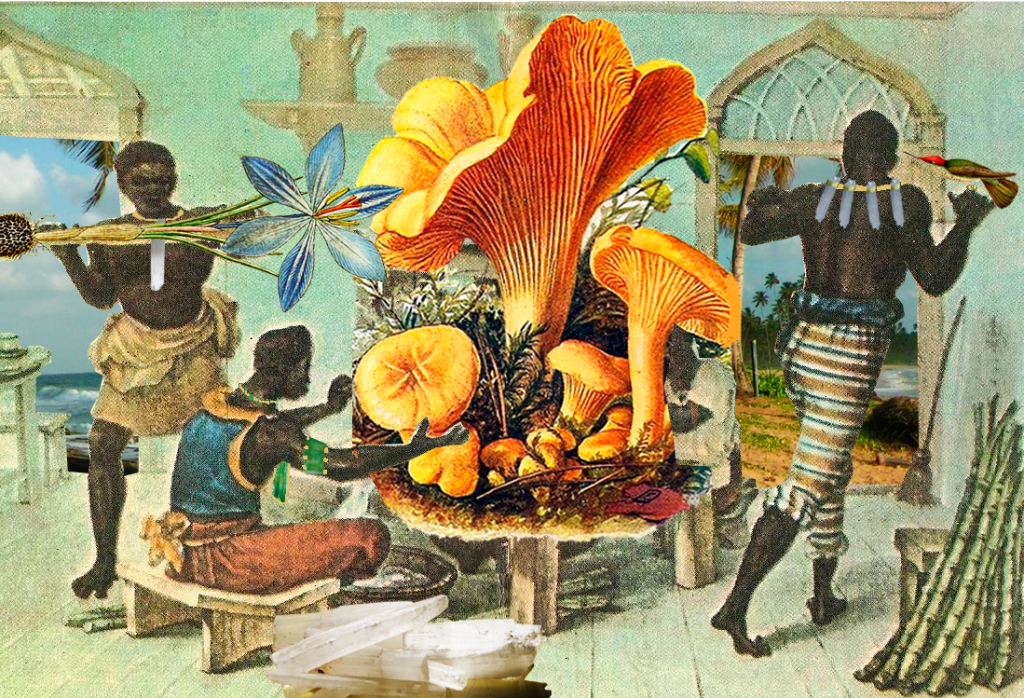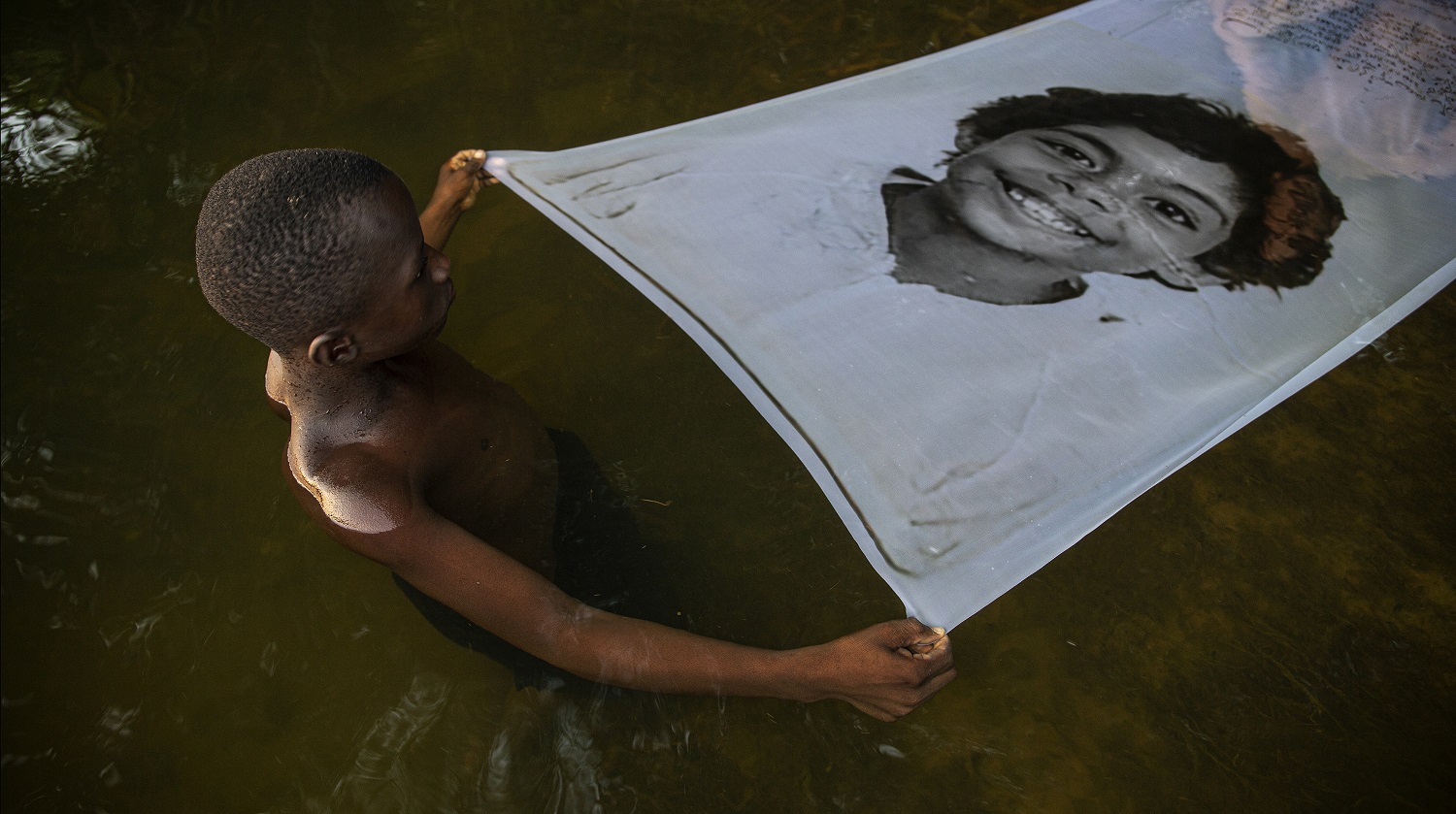The basic initiation proposal is determined by the integration of languages, which happens in the regular modality, our only obligatory path. Upon entering the EMIA, the 5 and 6-year-old children come to the school once a week and spend two hours with a pair of teacher- artists . At 7 and 8 years old, the meetings start to last three hours, even with two teachers. At 9 and 10 years old, the children have the quartet experience: three and a half hours with four teacher artists, one from each language: music, dance, visual arts, and theater, acting simultaneously and collaboratively. At 11 and 12 years old, the children can choose to deepen their experience in one of the four languages, in three-hour meetings.2
Nettings: Between Built, Broken, and Invented Threads for an Anti-racist Proposal in Art Teaching
Television, books, entertainment, sounds, spatialities, visuals, movements. These instances acting together cooperate for the perception of these relationships. The children will feel where their existence is "given" by disgust and when it will be welcomed as power and beauty. All this goes through the skin, reaching cognition.
Nettings
Between community, family and school, nettings are created that generate a substance of meanings. From thread to thread, signs are built by wrapping and, at the same time, disseminating considerations, behaviors, values, principles, realities, and conditionings. We weave the webs and at the same time, we are woven by them.
Through the points, and between them, we experience the flows and we exist in connection or in the possibility of a relationship with other tessituras; some built before we started our own journeys. Within that weaving that is at the same time woven, like people, the children feel and perceive. Through sensing they learn the network in which they are inserted, weaving within themselves paths of understanding and unique relationships. They form ways, they engender understandings, they make decisions, and they develop habits.
Within woven micro-architectures, children, in their multiplicities, conceive their own networks and at the same time sensorially identify “what” and “who” certain social settings claim as important and unimportant—classifications forged by the plots that preceded them.
In that way, they can incorporate rituals of reception, behavior and denial, for example. Thus, truths are being sown together and complexities appear organically from the perspective of feeling. On the other hand, without being mentioned, the children are noticing that their bodies matter, or not, it depends on the places, in the same way, that they feel which bodies are or are not welcomed.
This journey is not woven in a linear way, but small subtleties lead to those places. And among multiple meanings, marks are being forged and stigmas about themselves and about other people are being forged. In the plots, the paths of the images, of the words, of the territories, and the threads of the varied aesthetics, nourish the weaving of themselves that the children prepare to carry out.
If powers flourish from images, nutrition tends to have the same quality. And if the territory is concerned with the exercise of a diverse belonging, the idea is that it not only adds, but also changes with the purpose of occupying itself. However, having threads that fix ideas and truths about oneself and other people, a great complication is formed and, many times, it is necessary to break those plots.
The woven codes act collectively or rubbing against each other, whether they are within the family, the community, or the school. For example, if at home the body of a child matters, at school, that idea may not be the same. Even having people in their families who give them the benefit of the doubt, from the door to the outside, the context can be very different. Television, books, entertainment, sounds, spatialities, visuals, movements. These instances acting together cooperate for the perception of these relationships. The children will feel where their existence is "given" by disgust and when it will be welcomed as power and beauty. All this goes through the skin, reaching cognition.
Non-white children, distant from the colonial ideas of purity and childhood, have always felt this unfair traversal. Black children keep the experience of what they perceive, in subtle plots, from the cut that delegitimizes them. They feel that something about their physiques is not embraced by certain attitudes. And unfortunately, the school—a place-plot that should welcome them—can very well alienate them through its walls, chairs and ways of stigmatizing their bodies.
Stereotypes are woven and continued, and children note that the available affection can be highly limited. So, they perceive themselves in a crossroads between acceptance, reaction and silence. This is just one of the many crossroads that you will need to know how to navigate. There is no formula, but the event of what is felt.

For the researcher Ana Célia Silva, “In a multicultural society like Brazil's, the education system privileges white culture with the aim of promoting deculturalization and whitening.”1 In line with the author, we can consider that the plot-teaching system consolidates white privilege through the disaggregation of other plots. We can still suggest that this process is highly dimensioned by the processes of stigma construction in relation to people who do not move in this web of privileges.
Reproducing the idea of problematic students and difficult children is an efficient way to maintain the position of stigmas. Also added is the complete absence of powerful references where non-white children can flourish and be inspired. Both the formal and the informal school still weave those ideas. If we manage to perceive positively in space and in images, it is likely that the process of our occupation in the web-world is full of power. In the opposite sense, the experience of perceiving oneself as precious becomes extremely difficult.
Therefore, the school, just as it can create threads, can it break others that cooperate with the occupation of black children, for example? In the exercise of answering this question, we are going to dedicate ourselves to describing our process as art educators in a school that specializes in teaching artistic languages.
Netting-EMIA
EMIA is a public school for artistic initiation founded in 1980. It is a young netting, 43 years old, that has in its history experiences with infants in which space and time are raw materials for the elaboration of artistic-pedagogical processes. One of its principles is the integration of artistic languages; likewise, the interaction between children, families, management, and teaching staff is fundamental in the routes that the school travels.
The integration of languages occurs through encounters and daily artistic experiments, uniting research and action. This experimental context allows us to learn in many ways: with people, in the book, through games, in the path of the ants, in the swinging of the leaves, in the tree, and even in the plane that crosses the school's heaven.
The children arrive at the EMIA, generally, at the age of 5 and their period of regular stay at the school goes up to the age of 13:
In this way, the integration of languages is taking place, with exchanges of lines of diverse knowledge, between people-adults and people-infants—all with their dreams, desires and ways of acting in the world. In the EMIA-netting, as well as in other Brazilian institutions, one of the challenges that is increasingly updating is the way to carry out, in daily life, an anti-racist proposal that crosses the pedagogical practices developed in the school. Within this juncture, actions that include referenced non-Euro-white approaches, in a non-static and romanticized way, highlighting, here, the multiple experiences of black-Brazilian culture.
Black Body-Arts-Plot: A Proposed Approach
Feeling the need to weave threads that would face the difficulty of contemplating an anti-racist proposal in encounters with children, we, as a pair of teachers in a group of eight years, proposed a thread-project that consisted of working on the four languages (visual arts, dance, theater and music) from artists.
The particularity in common among the chosen artists was that they were all black, each one the owner of a unique narrative. We carry out a curatorship composed of Dona Ivone Lara (1921-2018), singer and composer; Mônica Cardim (1967), visual artist; Lázaro Ramos (1978), actor and writer; and Bethânia Gomes (1973), dancer and activist.
This purpose consisted of the possibility of approaching the body through the investigation of imagining, since the imagination is the raw material of our investigations and meetings. The experiments started with the presentation of the artists mentioned, who, although they have been in art for some time, were not recognized in the repertoire of children, whose references were generally non-black. And when these appeared or arose throughout the meetings, they were accompanied by some thread that aligned some trace of stigmatization.
To respond to this panorama in a certain way, we open paths embroidered with delicacy, respect, and a lot of affection. We wanted the children to enter this experience and leave with a perception in relation to the plurality of narrative networks of artistic languages and the people who carry them out.
The main strategy chosen was to present the work before each author. Our idea in this sense was that the children would create in their imagination an idea of who was the author of the work. How old was the person? Where was he/she born? Does he/she have children? What was their hair like and its texture? What profession did he/she have? What eye color? What was the color of his/her skin?
For example, in the presentation of the first artist—Dona Ivone Lara—we listened with the group to a song by the composer, “Sonho meu,” only instrumental. The proposed game consisted of the children experiencing movements of expanding and contracting the body during the flow of music. Later, we presented a drawing with only the traces of Ivone Lara's face so that they could color from what they had imagined, in addition to creating a story for the author of the musical work addressed.
The children created different narratives according to their cultural plots; many showed a certain distance with the group of artists presented. When coloring Dona Ivone Lara's face, it was rare to find that someone painted the singer's skin with a color that approximated some type of black skin. After identifying this situation, we shared a video with images of Dona Ivone Lara and the children were surprised to realize that she was a black artist. It was as if they couldn't imagine that someone who composes so well could belong to the black community.
At that moment, we noticed how stigmatizing lines are being woven in relation to the black population, so strongly over the centuries, and they were already crossing the threads of those children. We continued asking ourselves: what kind of tessituras constituted the social/family places of the children of that group, to the point of not conceiving as a possibility that a Brazilian music artist could be black? We highlighted that there were not only white children in the group. What kind of references did these children feel daily in their lives? Furthermore, what places did black people occupy within their networks?

Possible-Plots
We observed that the provocation of the breaking of certain threads was necessary, and one of them was executed by the very fabrication of the narratives that the children elaborated from the artists presented with subtle interferences that we were weaving. After sharing their narrative creations, we presented the stories we knew about these people along with their images.
To reach this objective, it was of fundamental importance to highlight the paths, principles and beliefs of each person, with the aim of woven into the imagination of children that black people are also agents of art.
When images of black people and their achievements are presented to children without stigma, threads are woven for possible existences. Occupying an imaginary and a territory of references that is transformed into a plot configured by acceptance, a space to which to belong, and recognition—of oneself and/or of who is near or far. It is evident that the children feel, and that is why they intercede. We only need to guarantee your right in the action to understand each other within the diversity of plots, always.

